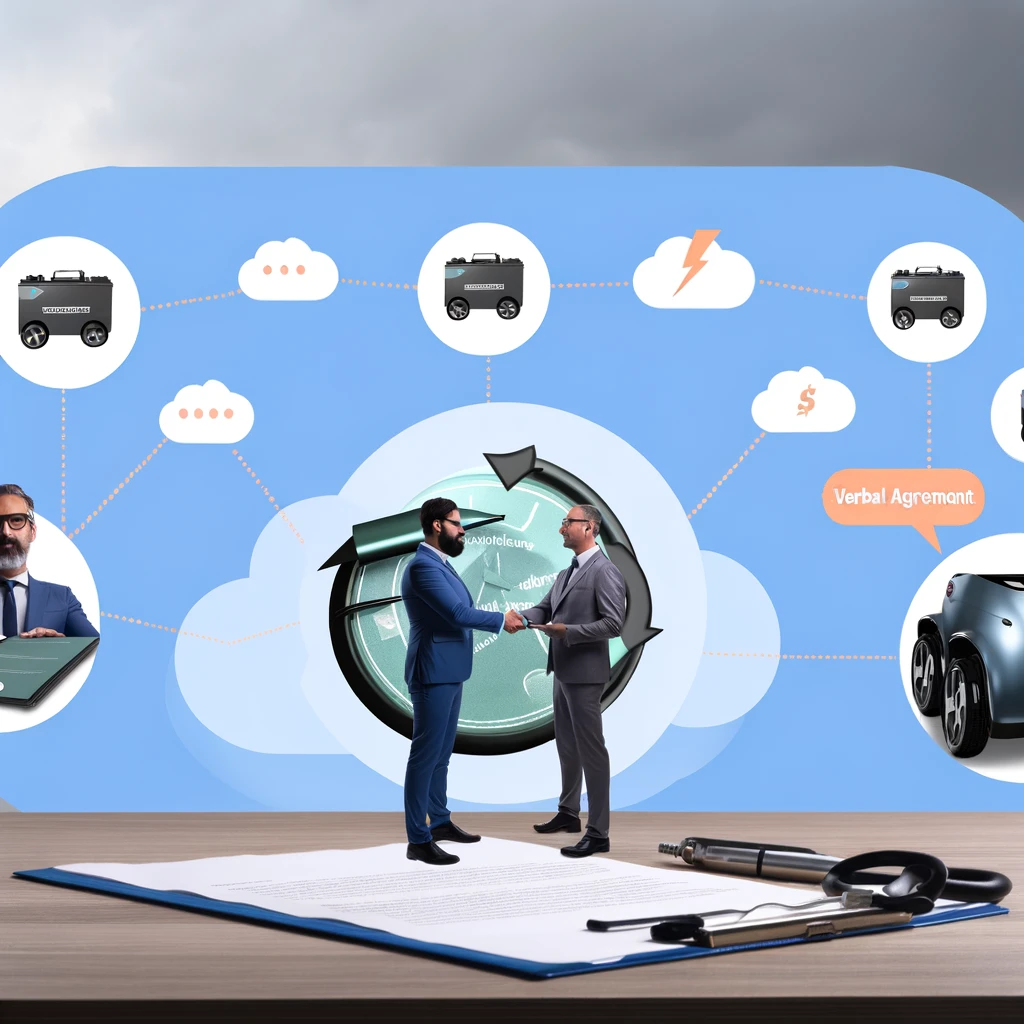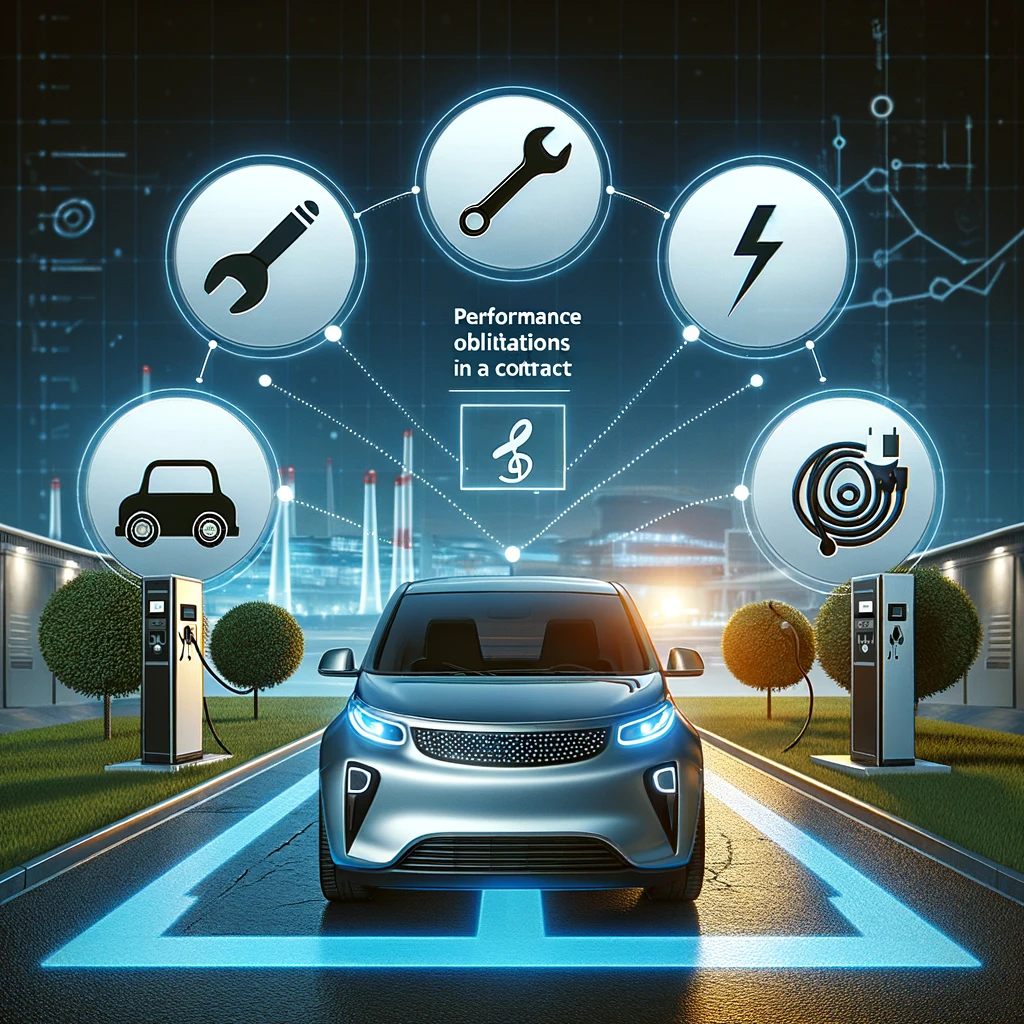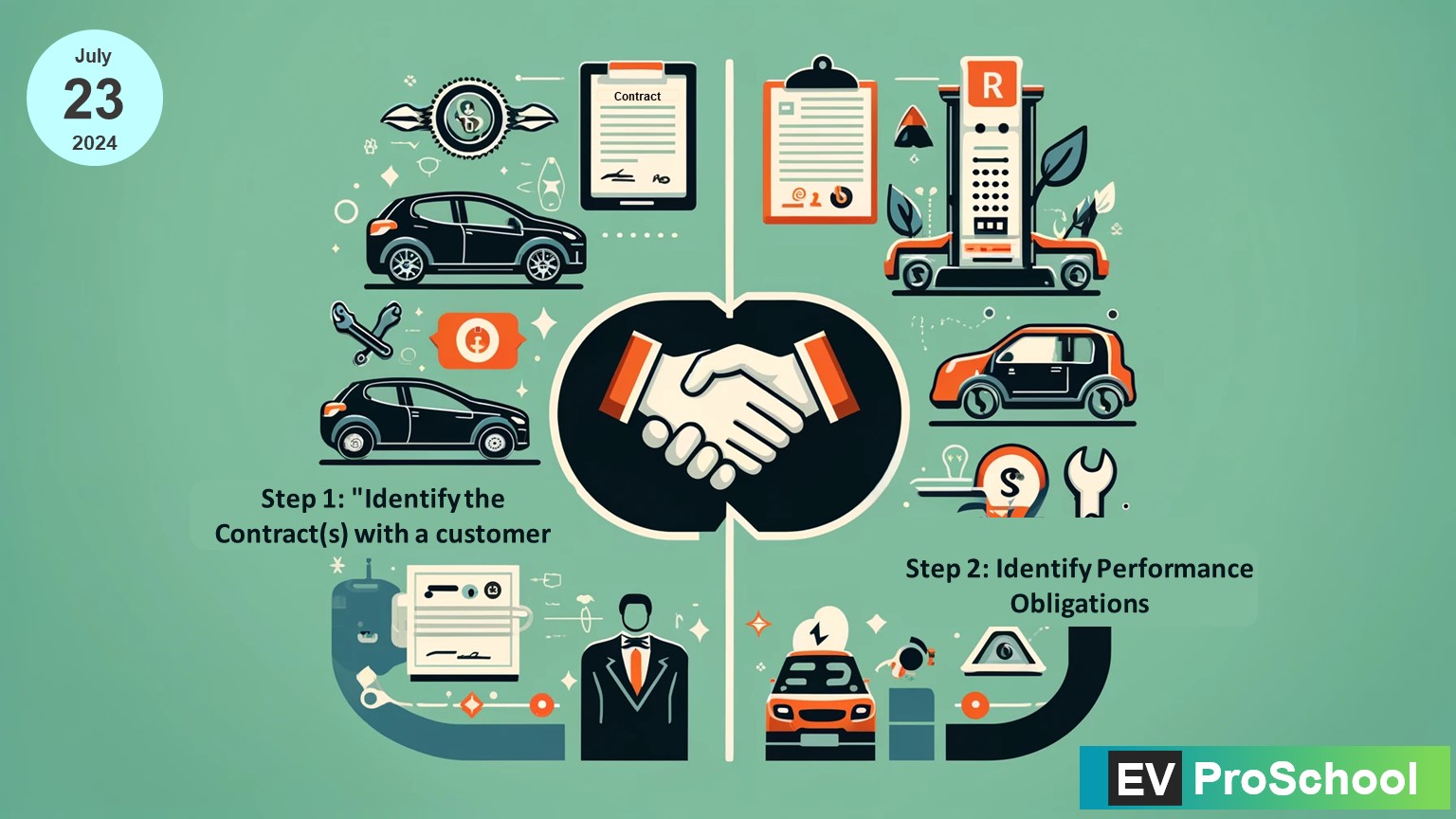Revenue recognition practices have historically been an area ripe for manipulation, with companies sometimes overstating or understating their revenue to influence perceptions among investors, stakeholders, or to optimize tax liabilities. This manipulation not only distorts the company’s financial health but also misleads investors and other stakeholders making decisions based on the financial statements.
Introduction to IFRS 15
To address these concerns and to provide a robust framework for revenue recognition, the International Financial Reporting Standards (IFRS) introduced IFRS 15, “Revenue from Contracts with Customers.” Implemented from January 1, 2018, IFRS 15 establishes a comprehensive, principle-based approach for revenue recognition across all industries, including the rapidly evolving electric vehicle (EV) sector.
The Core Principle of IFRS 15
IFRS 15 revolves around a core principle: a company should recognize revenue in a way that reflects the transfer of promised goods or services to customers at an amount that mirrors the consideration to which the company expects to be entitled in exchange for those goods or services. This principle is applied through a five-step model:
- Identify the Contract(s) with a customer.
- Identify the Performance Obligations in the contract.
- Determine the transaction Price.
- Allocate the transaction price to the performance obligations in the contract.
- Recognize revenue when (or as) the entity satisfies a performance obligation.
COPAR is the acronym to remember this core Principle. Lets delve into each step into detail. Here in this blogpost we will discuss step 1 & 2 in detail covering all aspect such that an engineering background associate can easily understand.
Step 1: “Identify the Contract(s) with a customer,”
Step 1, sets the foundation for the revenue recognition process. It requires careful consideration of several criteria to ensure that a contract is valid and enforceable under the standard. Let’s delve into each criterion with examples, particularly focusing on the electric vehicle (EV) industry to make these concepts more relatable to engineers.

1. Approval of the Contract and Commitment to Perform
A contract is considered approved when both the entity and the customer agree to the terms. This agreement can be formal (in writing) or informal (orally or implied by customary business practices).
Example: An EV manufacturer, ElectraMotors, enters into a verbal agreement with a supplier for the delivery of lithium batteries. Both parties have discussed and agreed upon the quantity, price, and delivery timeline. Despite the lack of a written contract, this agreement is binding as both parties have acknowledged and committed to their obligations.
2. Identification of Each Party’s Rights
The contract must clearly specify the goods or services each party is entitled to. This clarity is crucial for determining what needs to be delivered and what compensation is expected.
Example: ElectraMotors signs a contract to sell 100 EVs to a corporate client. The contract specifies that ElectraMotors will provide the vehicles and maintenance services for one year, while the client is obligated to pay a predetermined price for each vehicle.
3. Identification of the Payment Terms
The payment terms, including the transaction price and payment schedule, must be identifiable within the contract. This ensures that the entity understands when and how it will be compensated for the goods or services provided.
Example: The contract with the corporate client mentions that payment for the EVs will be made in three installments: 40% upfront, 30% upon delivery, and the remaining 30% after a 30-day satisfaction period.
4. Commercial Substance
The contract must have commercial substance, meaning that the risk, timing, or amount of the entity’s future cash flows is expected to change as a result of the contract.
Example: ElectraMotors agrees to exchange 20 of its current model EVs for 20 new model EVs from another manufacturer, with an adjustment for the difference in value. This exchange affects the future cash flows of ElectraMotors due to the expected higher sales value of the new models.
5. Probability of Payment
It must be probable that the entity will collect the consideration to which it is entitled in exchange for the goods or services transferred. This criterion addresses the customer’s ability and intention to pay the agreed-upon consideration.
Example: Before finalizing the sale of 100 EVs, ElectraMotors conducts a credit check on the corporate client. Based on the client’s strong credit history and ElectraMotors’ previous positive dealings with them, it is deemed probable that payment will be received according to the contract terms.
Summary
| Criteria | Keywords to Remember | Main Points from Example |
|---|---|---|
| Approval of the Contract and Commitment to Perform | Agreed upon the quantity, price, and delivery timeline | ElectraMotors and the supplier verbally agree on the terms of lithium battery delivery. |
| Identification of Each Party’s Rights | Clearly specify what needs to be delivered and what compensation is expected | signs a contract to sell 100 EVs to a corporate client and maintenance services for one year. |
| Identification of the Payment Terms | Payment schedule how it will be compensated for the goods or services provided | 40% upfront, 30% upon delivery, and the remaining 30% after a 30-day satisfaction period. |
| Commercial Substance | Risk, timing, or amount of the entity’s future cash flows | The agreement is expected to change ElectraMotors’ future cash flows due to the strategic importance of the batteries. |
| Probability of Payment | Customer’s ability and intention to pay | ElectraMotors conducts a credit check to ensure the supplier’s ability and intention to fulfill payment terms. |
The first step in IFRS 15 is critical as it establishes the contract’s validity and enforceability, setting the stage for the subsequent steps in the revenue recognition process. By thoroughly evaluating these criteria, entities like ElectraMotors can ensure they are on solid ground before recognizing revenue from their contracts, thereby providing accurate and reliable financial information to stakeholders.
Step 2: Identify Performance Obligations in the Contract
Understanding performance obligations is crucial as it lays the groundwork for recognizing revenue accurately. Let’s simplify this with an analogy before diving into a specific example from the electric vehicle (EV) industry.
Imagine you’re buying a high-end EV, not just for the vehicle itself but for a package deal that includes free servicing for the first year and a home charging setup. In this scenario, the seller has three distinct performance obligations: the EV, the servicing, and the charging setup. Each of these promises must be identified and evaluated to ensure proper revenue recognition.
Performance Obligation Defined:
A performance obligation in a contract is a promise to transfer a distinct good or service to the customer. If the promise involves a series of goods or services, they must be substantially the same and have the same pattern of transfer.
Example in the EV Industry:
ElectraDrive’s Contract with a Fleet Operator:
ElectraDrive, an EV manufacturer, signs a contract to sell 50 EVs to a fleet operator. The contract also includes a 2-year maintenance service for the vehicles and access to ElectraDrive’s network of charging stations.
Identifying Performance Obligations:
- Delivery of EVs: Each vehicle is a distinct good that can benefit the fleet operator on its own.
- Maintenance Service: A promise to provide servicing over two years, which is a series of services that are substantially the same and have the same pattern of transfer (i.e., continuously over the service period).
- Access to Charging Stations: Though access is provided for two years, it’s distinct from the vehicles and maintenance service and significantly affects the contract’s overall value.

Principal vs. Agent Considerations in Step 2:
What if ElectraDrive does not control the services provided by the maintenance company and the charging network provider but acts as an intermediary, ElectraDrive’s revenue would be limited to the sale of EVs and possibly any commission or fees earned for arranging the maintenance and charging services. The maintenance company and charging network provider, as principals, would recognize the revenue for the services they directly provide to the customer.
Under IFRS 15, an entity is a principal if it controls the promised good or service before transferring it to the customer. An agent is an entity that arranges for the principal to provide the good or service to the customer and typically earns a commission or fee.
Revenue Recognition by Each Entity:
- ElectraDrive (EV Sales): ElectraDrive would recognize revenue for the sale of the 50 EVs because it controls these goods before transferring them to the fleet operator. The transaction price allocated to the EVs (based on their standalone selling price or another appropriate method) would be recognized as revenue by ElectraDrive at the point of transfer of control to the customer.
- Maintenance Company: Since the maintenance company is providing the service directly to the fleet operator and ElectraDrive is acting as an agent, the maintenance company would recognize revenue for the maintenance service. ElectraDrive may earn a commission or fee for arranging the service, which would be its revenue. The total revenue recognized by the maintenance company would correspond to the price charged for the 2-year maintenance service.
- Charging Network Provider: Similarly, the charging network provider, being the entity that controls the charging services before they are provided to the fleet operator, would recognize the revenue for providing access to its network. ElectraDrive, as an agent for this part of the contract, would recognize revenue equal to any commission or fee it earns for facilitating access to the charging network.
Until now we have covered the Step 1 & 2. Lets understand Step 3, 4 & 5 in next blogpost.
- Identify the Contract(s) with a customer.
- Identify the Performance Obligations in the contract.
- Determine the transaction Price.
- Allocate the transaction price to the performance obligations in the contract.
- Recognize revenue when (or as) the entity satisfies a performance obligation.
Conclusion
IFRS 15 combats revenue manipulation by setting out a clear, applicable framework for all entities, enhancing the reliability and comparability of financial statements. For stakeholders in the EV industry, from investors to engineers venturing into entrepreneurship, understanding IFRS 15 is crucial for interpreting financials accurately and making informed decisions.
This move towards transparent, principle-based revenue recognition helps maintain market integrity, fosters investor confidence, and ultimately supports the sustainable growth of businesses, including those driving forward the future of mobility in the EV sector.



